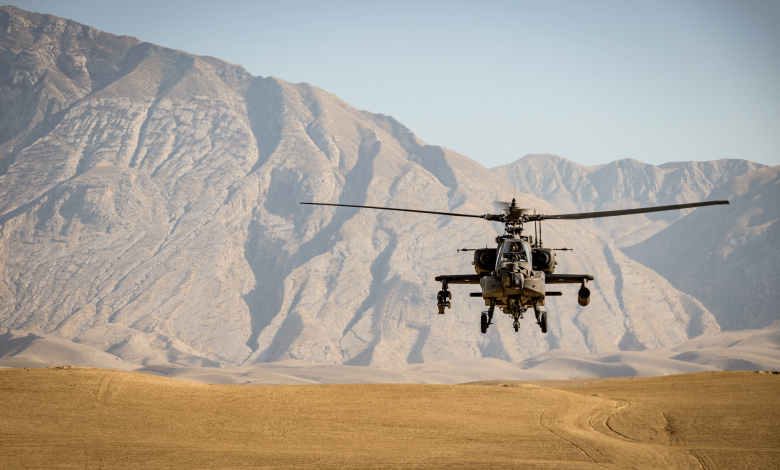A Cursory Glance at the Bloodshed on Afghan Soil:

By Qasim Swati (United Kingdom)
The practice of shedding blood on Afghan soil is not new, but it dates back to thousands of years in the past, as the Afghan people have always resisted against any foreign attack and aggression, whenever others have tried to attack this country and consolidate their grip on the land of Afghans. That is why Alexander III of Macedon/Alexander the Great (356 BC – 323 BC) faced a heavy and violent resistance from the local tribes of Afghans when he invaded Afghanistan in 330 BC, in which case, bloodshed was inevitable.
However, this is not the only instance of bloodshed in Afghanistan, because blood was also shed in this region during the various Muslim conquests of Afghanistan from 637 to 709 when the Arab Muslims turned their attention towards eastwards, including the areas covering today’s Afghanistan.
After the Arab conquerors, a great deal of blood has also been spilled on Afghan soil for controlling the region by such empires and dynasties, as Tahirid dynasty (821 AD–873 AD), Saffarid dynasty (861–1003), the Samanid Empire (819–999) and the Ghaznavid dynasty (977–1186), etc.
Apart from it, the Mongol invasion of Central Asia (1216–1222) cannot be ignored, as well, in history, during which, the Mongol commanders and leaders had slaughtered, at least, 1.7 million people of the Khwarazmian dynasty, including soldiers and civilians (25% of the population), while the Qara Khitai Dynastic Empire and the Mongol Empire had suffered 60,000 to 70,000 and around 50,000 casualties, respectively, and Afghanistan was a part of this battlefield.
Similarly, no one can disregard the role played by the Timurid dynasty in shedding blood on Afghan soil, because the Timurid Empire (1370–1507, founded by Timur [1336-1405]) was a Persianate Turco-Mongol Empire, comprising modern-day Uzbekistan, Iran, Kazakhstan, the southern region of the Caucasus, Afghanistan, Mesopotamia, much of Central Asia and parts of contemporary Turkey, Syria, Pakistan and India, too, had fought many battles and wars for strengthening its control and power in this region (the area where Afghanistan does exist at present).
In the same way, northern Afghanistan has seen a lot of bloodshed during the Mughal Empire (1526–1857), established by Zahir ud-Din Muhammad Babur, while covering a land area of 4,000,000 kilometres (1,500,000 sq mi), and having a population of 158,400,000 at that time.
Afghanistan also experienced the First Anglo-Afghan War (1839–1842), fought between the British Empire and the Emirate of Afghanistan, which resulted in as many casualties as 31,900 to 32,000 in total, of which, 12,000 military infantry and 3,000 light tribal cavalry casualties were on Afghan side, while the British casualties amounted to 4,700 line infantry soldiers, 12,000 camp followers and 200 to 300 heavy cavalry.
The Second Anglo-Afghan War (1878–1880) was another example of bloodshed on the soil of Afghanistan, where more than 14,850 had died, as a result of the war (Afghan fatalities: more than 5,000 lost their lives in just major battles; British fatalities: 1,850 got killed in action or died of wounds, while 8,000 died of diseases).
The Third Anglo-Afghan War (1919) also proved to be disastrous for both sides, in which some 1,000 to 1,200 Afghans died and around 3,000 were injured, while 236 British soldiers lost their lives and up to 1,500 being wounded.
Afghanistan went through another series of bloodshed during the Afghan Civil War (1928–1929), which resulted in some 7,500 combat deaths each on both sides.
Despite being a relatively non-violent revolution or bloodless coup, the 1973 Afghan coup detat still led to the deaths of 1 tank commander and 7 police officers, in which Sardar Mohammed Daoud Khan deposed the then King of Afghanistan, Mohammed Zahir Shah.
Likewise, there were substantial casualties and losses, as a result of the Saur Revolution or the April Coup when Sardar Mohammed Daoud Khan (the then President of Afghanistan) was overthrown by the People’s Democratic Party of Afghanistan on 27–28 April, 1978.
The Soviet-Afghan War (1979–1989) is responsible for most of the bloodshed on Afghan soil, in which, at least, 14,500 Soviet soldiers died, 53,753 got injured and 264 being missing, as estimated by the Soviet sources. Nevertheless, other sources claim that the Soviet Union had lost 26,000 soldiers, including 3,000 officers in this war, instead. Around 18,000 Afghan soldiers also lost their lives, as a result of this conflict. There were some 90,000 casualties on the Mujahideen side, too, while Pakistan suffered about 12,579 casualties, including 5,775 deaths and 6,804 injuries, resulting from its involvement in the war.
In a similar way, Iran suffered in this crisis as well, while 562,000 – 2,000,000 Afghan civilians were killed and, approximately, 3 million of them got injured. Nonetheless, the casualties and losses, caused by the Soviet-Afghan War can be more than what has already been mentioned, because other sources put the casualties suffered by the Mujahideen to be 150,000 to 180,000 instead.
Even though, the Soviet-Afghan War came to an end on 15 February, 1989, the story of the carnage of war in Afghanistan did not stop here, and a new series of civil wars started in the country. Consequently, another modern-era First Afghan Civil War (1989-1992) began on Afghan soil, which took the lives of thousands of people, while wounding thousands more.
The Second Afghan Civil War (1992–1996) broke out on 28 April, 1992 and lasted until 27 September, 1996, in which too much bloodshed took place and thousands of civilians lost their lives, while so many of them were wounded, as a result of this conflict.
In the same way, the Third Afghan Civil War (1996–2001) was another period, when the country was in turmoil, which caused a large number of civilian and combat casualties in Afghanistan.
The country had not yet recovered from the damage done in the previous civil wars that a new war in Afghanistan (2001–2021) kicked off when the United States and its NATO allies invaded the country against the Taliban and al-Qaeda on 7 October, 2001, which continued and lasted for, almost, two decades, and led to hundreds of thousands of casualties, including more than 178,829 to 181,829 deaths and over 37,773 being wounded or even the number of the people, killed in the conflict, may be more than 212,191, so far, according to the data given by the Uppsala Conflict Data Program.
Likewise, 2021 is also to blame when it comes to the continuation of bloodshed on the soil of Afghanistan, because it witnessed the 2021 Taliban Offensive (1 May, 2021 – 15 August, 2021), which resulted in many deaths, injuries and other losses, like the previous civil wars in the country did. It is estimated that more than 40,000 people have been wounded just since June, 2021 (2,043 of them being civilians only); the number of civilians killed (1,031); Taliban killed (9,819) and as many as 5,472 being wounded), as claimed by the Afghan government on 9 August, 2021, while the conflict has led to around 1,537 deaths of members of Afghan forces and injuring, at least, as many of them as 972.
However, the bloodshed did not stop after the Second Taliban Takeover, but continued in some way in various parts of the country. One of such massacres which we saw in the form of a suicide attack that occurred at the Hamid Karzai International Airport in Kabul on 26 August, 2021, is responsible for the deaths of more than 182 people, while injuring over 150 more.
Qasim Swati is a freelance journalist, writer and human rights activist, based in the UK, and can be reached at https://qasimswati.com or mailto:info@qasimswati.com.

